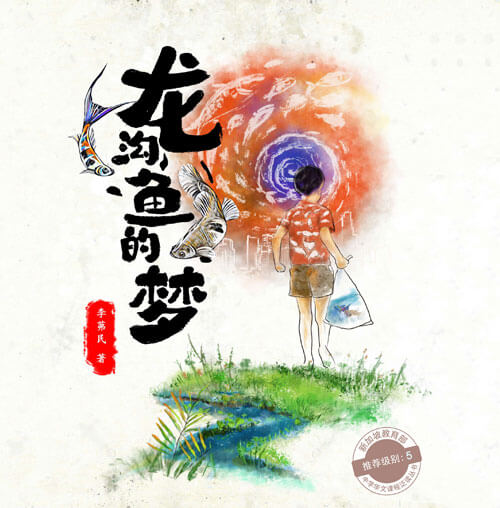Quick Contacts
If you have any questions or need help
+65 9611 0206 – Stella Chia
+65 8900 7956 – Johnson
+65 6763 1882 – Office
51 Jalan Lekar, Singapore 698946
If you have any questions or need help
+65 9611 0206 – Stella Chia
+65 8900 7956 – Johnson
+65 6763 1882 – Office
51 Jalan Lekar, Singapore 698946
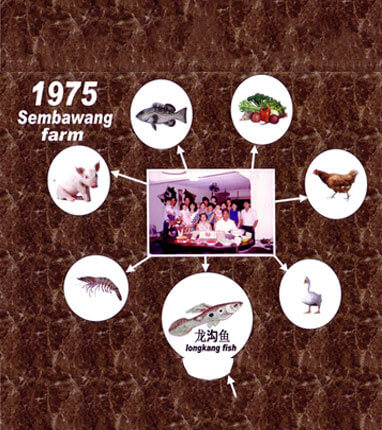
In the 1970s, we, the Pay family, established our original farm in Sembawang as a family business dedicated to agriculture. Our farm was involved in producing multiple farm products, ranging from vegetables to livestock, reflecting the diverse agricultural practices of the time. We also set up a nursery to study and cultivate various crops, allowing us to innovate and improve our farming techniques.
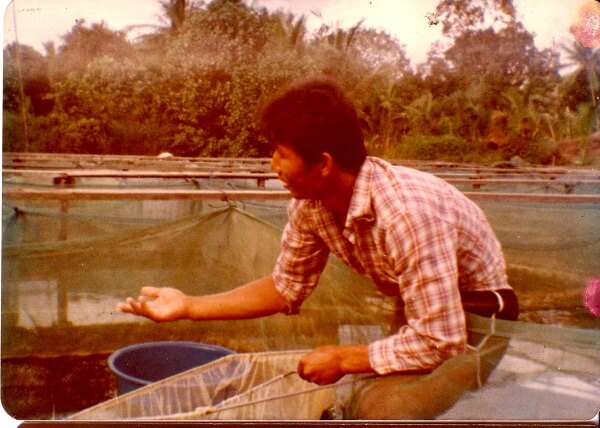
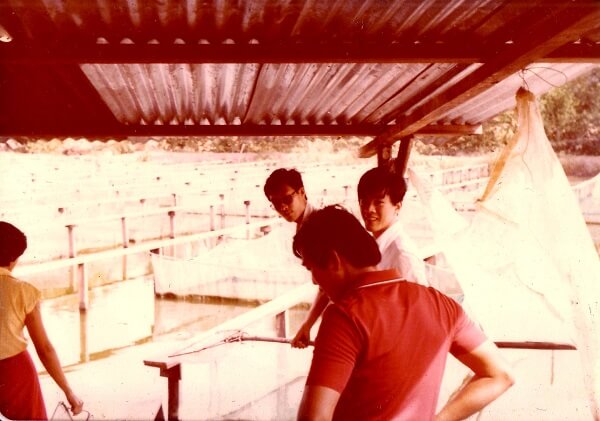
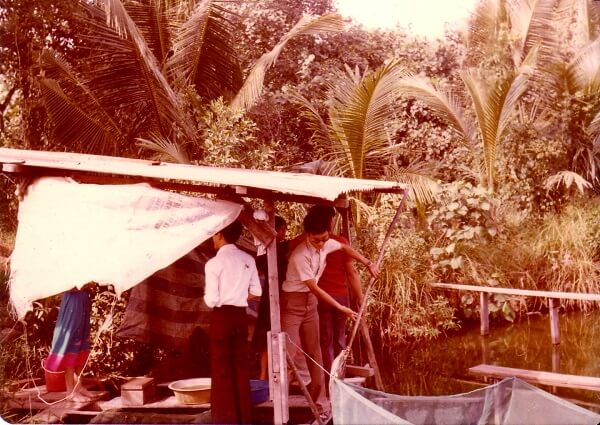
From 1975 to 1983, we experienced significant growth and transformation at our farm. In 1975, we began our journey by focusing on guppy breeding, capitalizing on the increasing popularity of ornamental fish in Singapore. By 1980, we moved to Kranji Farm, a strategic location that allowed us to expand our operations and diversify our offerings. This move enabled us to incorporate more advanced farming techniques and better facilities to support our growing business. In 1983, we relocated again to Old Choa Chu Kang Road Farm, where we transitioned from guppies to establishing a frog farm as we faced increasingly unfavorable environmental conditions for breeding guppies at our farm in Sembawang. This period marked a pivotal evolution in our farming practices, aligning with Singapore’s broader agricultural development goals during a time of rapid urbanization.
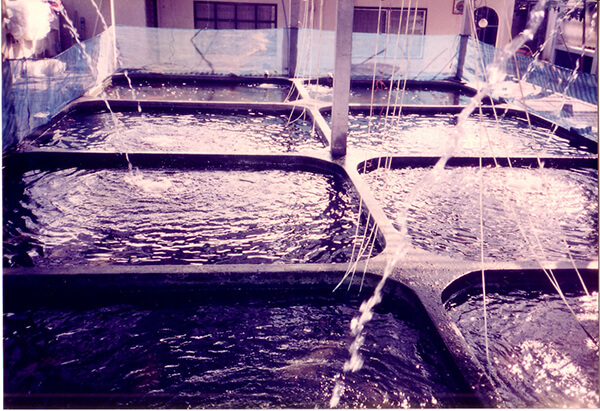 Local Carp
Local CarpIn 1983, we made an exciting move to Lim Chu Kang Farm, coinciding with Singapore’s push for agrotechnology. This fresh start inspired us to revisit our roots in guppy breeding while also launching our own koi breeding program. By 1986, we began breeding koi instead of relying on imports, embracing the opportunity to cultivate high-quality koi locally. This strategic shift allowed us to tap into the advancements in farming techniques available at our new location, ensuring that we could meet the growing demand for ornamental fish in Singapore while enhancing our operations.
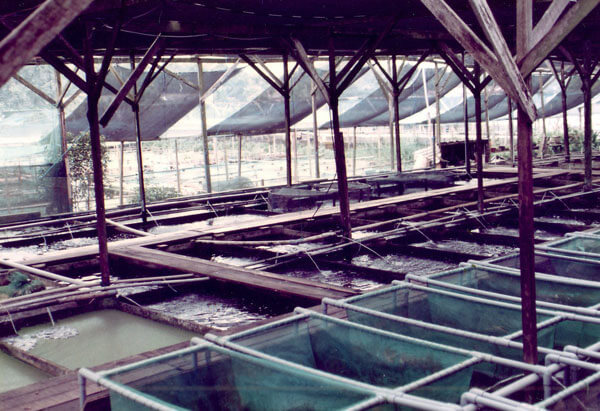 Start of Nippon Koi Farm
Start of Nippon Koi FarmIn 1990, we took a significant step forward by starting to import Japanese koi at our farm in Tampines. Notably, the name Nippon Koi Farm was officially registered in then. This decision was driven by the increasing demand for high-quality koi among local enthusiasts who sought the beauty and prestige associated with these ornamental fish. By importing directly from renowned Japanese breeders, we could offer a wider variety of koi with superior genetics and vibrant colors, enhancing our reputation in the market. This move not only allowed us to cater to the growing interest in koi keeping but also positioned us as a key player in Singapore’s ornamental fish industry, blending our local breeding efforts with the best that Japan had to offer.
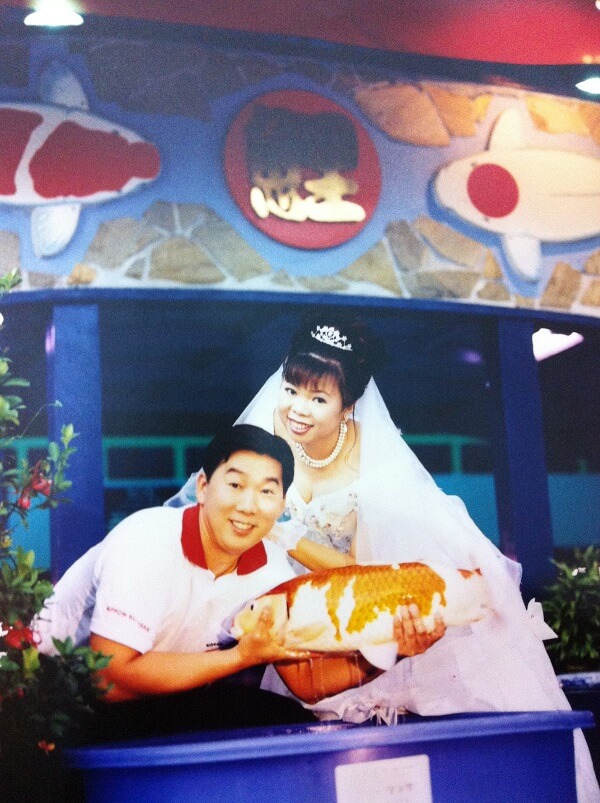
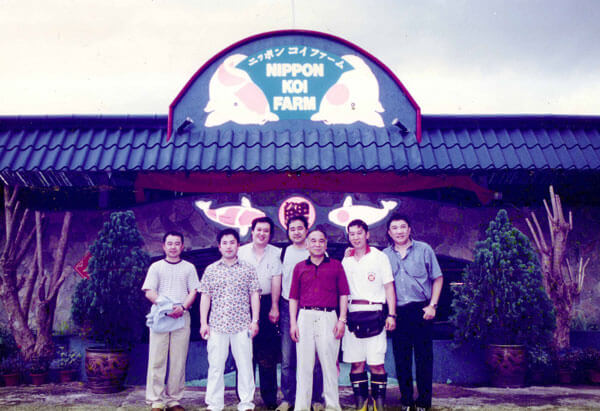
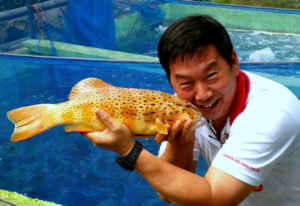 Conversion to food fish
Conversion to food fishIn response to the evolving demands of the market, we upgraded our facilities to better suit the needs of food fish production. This enhancement allowed us to implement more efficient farming practices and improve water quality management, ensuring optimal growth conditions for our fish. By modernizing our infrastructure, we aimed to increase our output while maintaining high standards of sustainability and animal welfare. This strategic move not only diversified our offerings but also positioned us to meet the growing demand for locally sourced food fish in Singapore, reinforcing our commitment to contributing to the country’s food security.
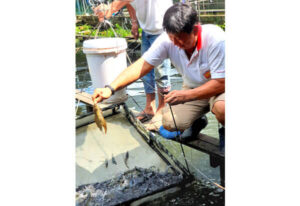 We started to grow Vannamei Prawns like we did back in 1975.
We started to grow Vannamei Prawns like we did back in 1975.In 2015, we decided to challenge ourselves by returning to prawn farming, specifically focusing on Vannamei prawns, much like we did back in 1975. This decision was driven by our desire to embrace the complexities of prawn cultivation and push the boundaries of our aquaculture expertise. With advancements in farming techniques and a renewed commitment to sustainability, we aimed to create optimal conditions for growing these prawns, known for their fast growth and high market demand.
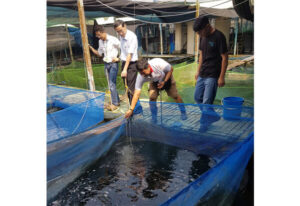 We started to challenge high omega silver perch.
We started to challenge high omega silver perch.In 2016, we embraced a new challenge by starting to breed high omega silver perch, recognizing their potential in the aquaculture market. To ensure success, we collaborated with the Agri-Food & Veterinary Authority of Singapore (AVA) to develop effective breeding techniques for this species. Silver perch are known for their rapid growth and high omega-3 content, making them an attractive option for both health-conscious consumers and the culinary market. Our partnership with AVA allowed us to implement best practices in breeding and husbandry, ensuring that we could produce healthy, high-quality silver perch that would thrive in our local environment while contributing to Singapore’s food security goals.
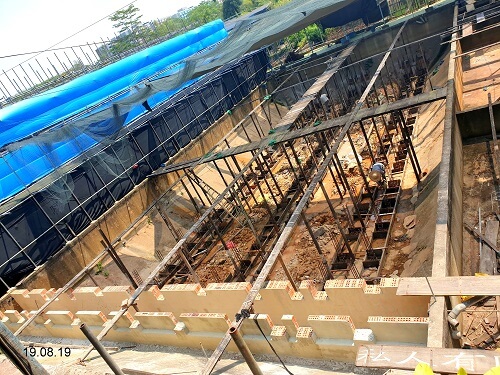
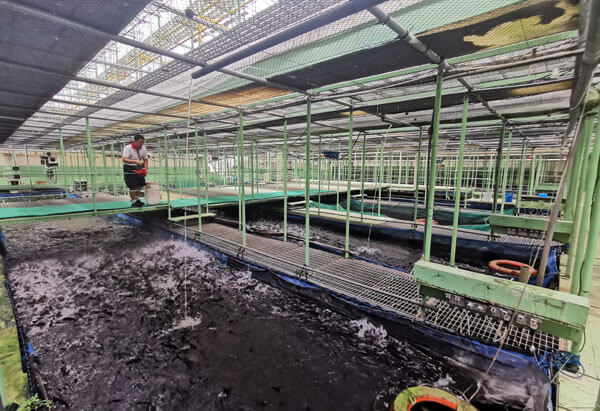
In 2020, we successfully completed our first aquaponics system as part of a government-supported initiative aimed at enhancing Singapore’s food security. This project was particularly timely given the challenges posed by the COVID-19 pandemic, which led to disruptions in foreign imports and heightened the need for local food production. Our aquaponics system was designed to create a symbiotic environment where fish waste nourished plants, aligning with the government’s goals to promote sustainable farming practices.
By collaborating with government agencies, we ensured that our system met national needs for self-sufficiency in food production. The aquaponics approach not only maximized space utilization but also minimized resource use, addressing both environmental concerns and the increasing demand for locally sourced food. Additionally, we innovated our farm products into food products by integrating fresh vegetables and fish into ready-to-eat meals, enhancing their market appeal and nutritional value. This initiative positioned us to contribute significantly to Singapore’s agricultural landscape during a critical time, reinforcing our commitment to innovation and sustainability in aquaculture while supporting the nation’s goal of reducing reliance on imported food.

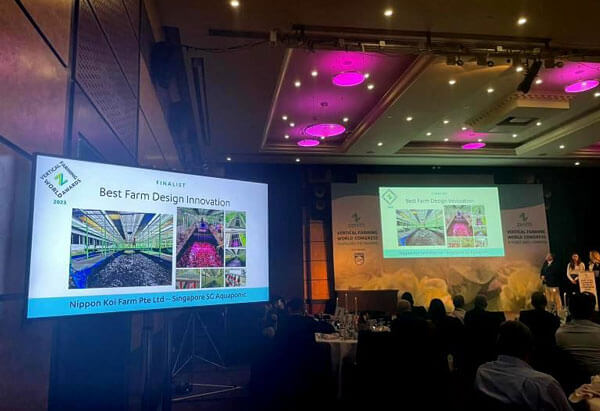
From 2022 to 2023, we at Nippon Koi Farm proudly participated in the prestigious Zenith Global World Vertical Farming competition, showcasing our innovative Nippon SG Aquaponic system. This competition allowed us to highlight our commitment to sustainable agriculture and cutting-edge farming techniques.
In 2023, we achieved remarkable success, winning the title of “Best New Vertical Farm Facility” and becoming finalists in several categories, including “Best Farm Design” and “Best in Technology Development.” These accolades reaffirmed our dedication to innovation and excellence in vertical farming. Our participation not only solidified our position as a leader in sustainable aquaculture but also aligned with Singapore’s goals for food security. Through these achievements, we continue to inspire others in the industry while contributing to the global movement toward more efficient and eco-friendly farming practices.
At Nippon Koi Farm, we plan to set a benchmark for aquaponics while continuing to grow prawns as a core part of our operations. Our innovative Nippon SG Aquaponic system is designed to maximize resource efficiency and sustainability, allowing us to integrate fish and plant cultivation seamlessly. By focusing on high-density aquaponics, we aim to achieve superior yields and minimize environmental impact.
As we enhance our prawn farming practices, we will leverage our expertise in aquaculture to optimize growth conditions for freshwater prawns, ensuring high-quality production that meets market demands. Our approach includes utilizing advanced technology and sustainable practices, such as solar power and rainwater recycling, to create a zero-emission farming environment.
Additionally, we are committed to educating the community about food sustainability and our farming history. By sharing our knowledge through workshops and collaborations with international students, we hope to inspire the next generation of farmers and contribute to a more sustainable food system. Through these efforts, we aim not only to lead in aquaponics but also to export high-quality food products overseas, setting a new standard for sustainable agriculture in Singapore and beyond.
By 2030, we hope to fully implement the farm-to-table concept, serving the entire country while aligning with Singapore’s ambitious “30 by 30” food security goals. This initiative aims to produce 30% of Singapore’s nutritional needs locally, significantly reducing our reliance on food imports.
Our focus on sustainable farming practices will play a crucial role in achieving this target. We plan to utilize innovative farming techniques, including vertical systems and aquaponics, to maximize yield and resource efficiency. This approach not only addresses the challenges posed by limited arable land but also promotes environmental sustainability.
In addition to enhancing local production, we are committed to educating the public about food sustainability and our farming history. By sharing knowledge and fostering community engagement, we aim to inspire a collective effort towards food security. Our goal is to establish a robust framework for exporting food products overseas while contributing to Singapore’s self-sufficiency in food production, ultimately setting a benchmark for sustainable agriculture in the region.
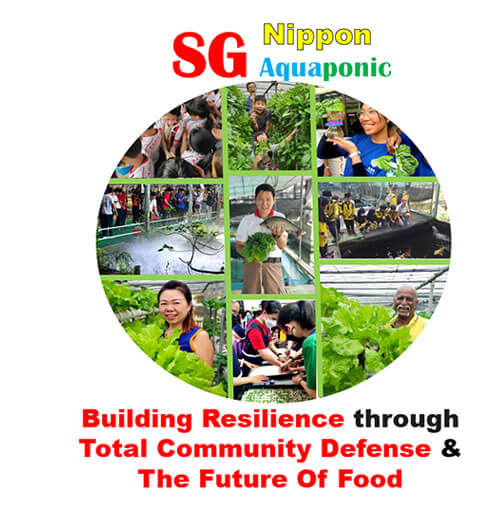
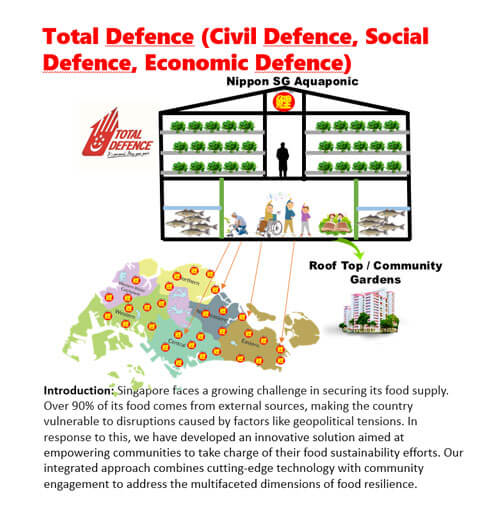
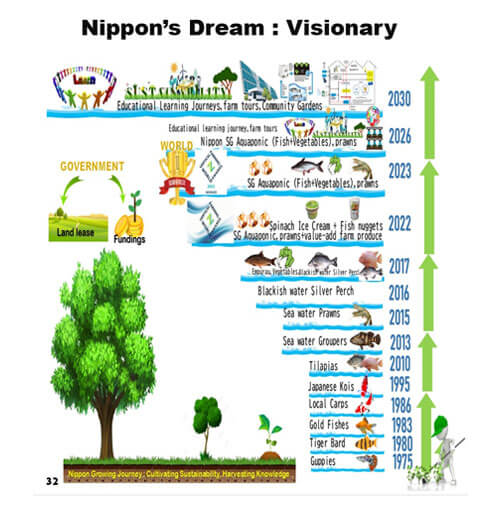
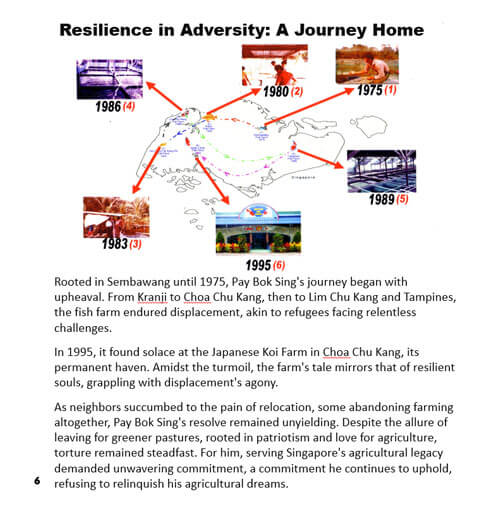
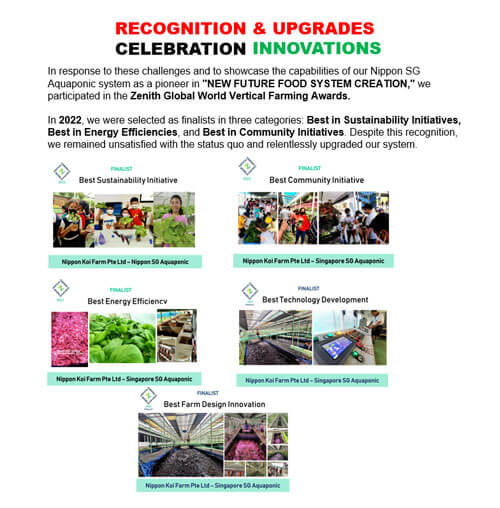
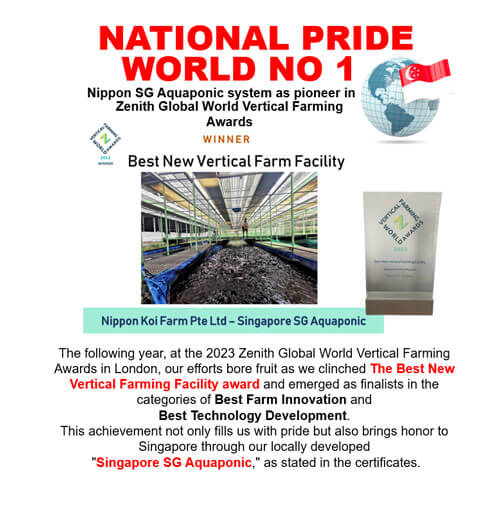
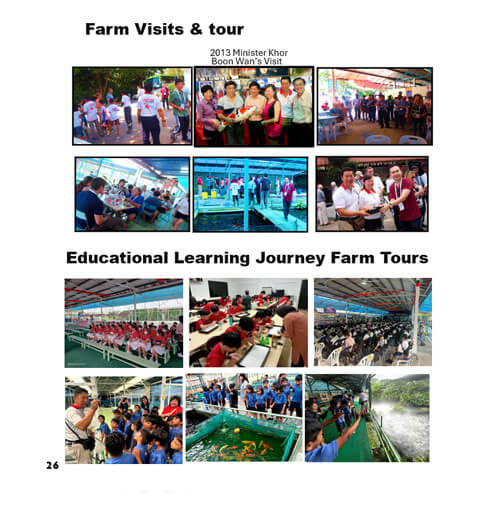
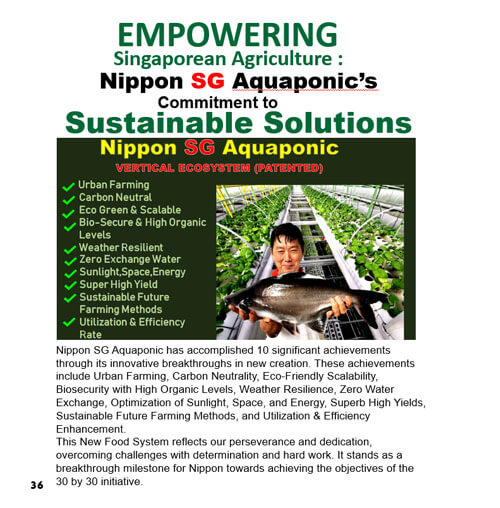
Author: 李茀民
Publication Date: 27/11/2024
Publisher: 友谊书斋
Series: 中学华文课程泛读丛书.推荐级别:5
故事的内容,以号称“鯉鱼大王”的本地渔农白先生的真实故事为原型。作者在白先生所做过的“三个梦”的基础上,加入了新加坡渔业发展状况的叙述与描写:从1950年代食用鱼的养殖,到1960年代观赏鱼的培育及至出口;从1970至90年代这20多年间本地渔场的多次迫迁,再到千禧年后鱼菜共生高科技垂直农场的诞生、研发,甚至扬名海外、载誉归国。
